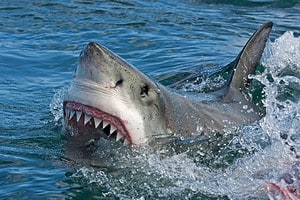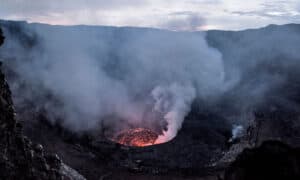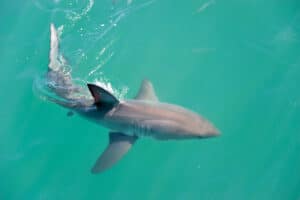Did you know that Washington State is home to many different shark species? Some are even regularly caught. One of the most common sharks off the coast of Washington is the sixgill shark. This shark species is especially common in the Puget Sound. Can you guess the size of the largest one recorded and caught in the state? Follow along to discover the largest sixgill shark ever caught in Washington State. It was a true beast!
What is the Largest Sixgill Shark Ever Caught in Washington?
The largest sixgill shark ever caught in Washington State weighed an astonishing 220 pounds! Jim Haines caught this massive shark on Gedney Island on January 30, 1991. This record is also the largest shark species caught in the state, according to the Washington Department of Fish & Wildlife.
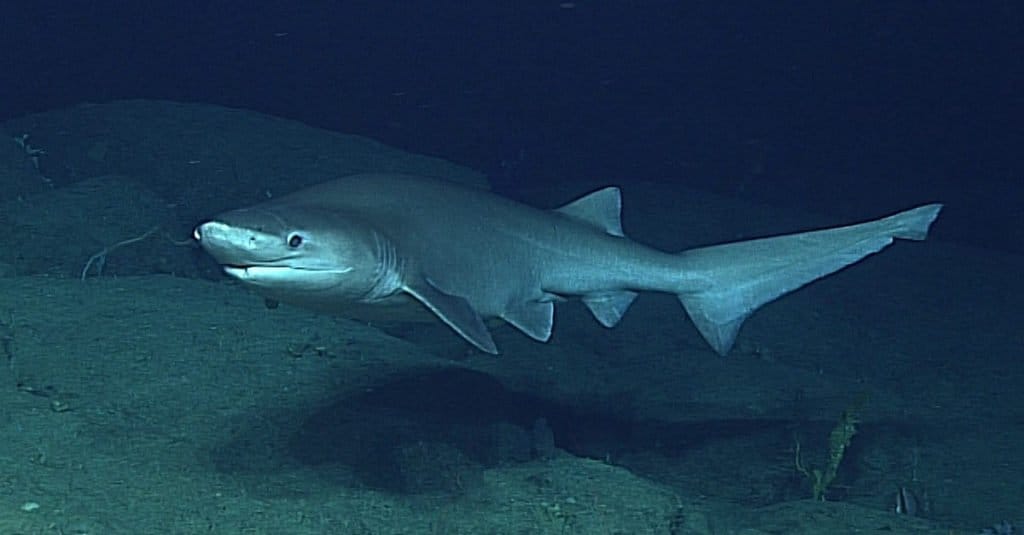
Jim Haines caught the largest sixgill shark ever caught in Washington State on Gedney Island on January 30, 1991.
©NOAA Ocean Explorer from USA / CC BY-SA 2.0 – License
About Sixgill Shark
The sixgill shark, also known as the bluntnose sixgill shark, is a large shark species found in tropical and temperate waters worldwide. They are members of the Hexanchidae family. Currently, the sixgill shark is listed as Near Threatened on the IUCN Red List. Although common, they are vulnerable to over-fishing.
Appearance and Size
Bluntnose sixgill sharks have a unique appearance. They can grow up to 20 feet long. The average weight of a bluntnose sixgill shark is 800 to 1,100 pounds. They have a large body and a long tail. As their name suggests, they have blunt and wise snouts. They also have small florescent green-blue eyes. Bluntnose sixgill sharks have six rows of sharp teeth on their lower jaw and smaller teeth on their upper jaw. Their coloration varies. Some bluntnose sixgill sharks are grey, tan, or brown-black.
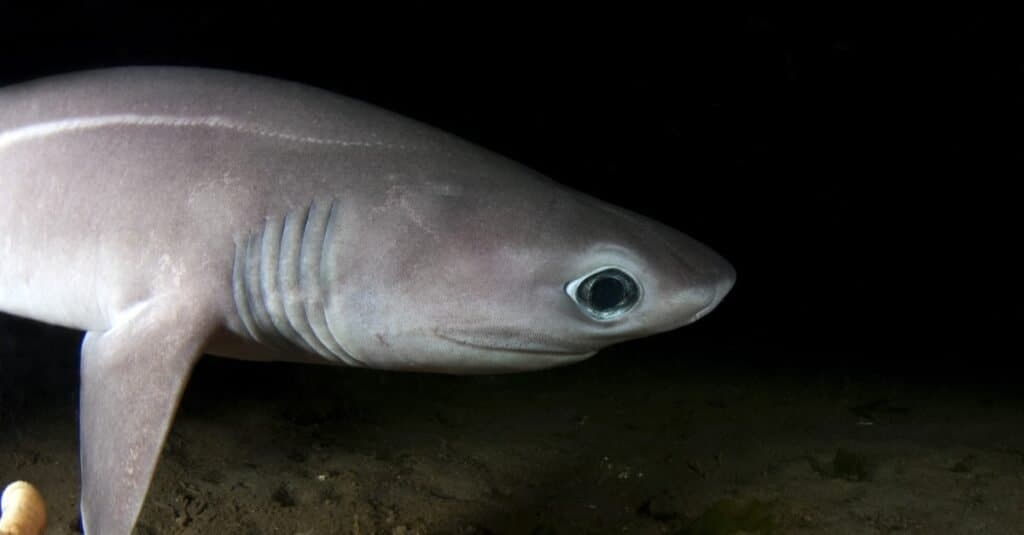
Bluntnose sixgill sharks can reach up to 20 feet long and weigh 1,300 pounds.
©Greg Amptman/Shutterstock.com
Distribution and Habitat
You can find bluntnose sixgill sharks throughout the world and Washington State. According to the Washington Department of Fish and Wildlife, bluntnose sixgill sharks live from the Aleutian Islands, Alaska to Baja California, Mexico in the Eastern Pacific. Typically, these sharks dive deep up to 6,152 feet. Although they spend most of their lives in the deep sea, they sometimes wander to shallow waters looking for food.
Diet
So, what do these sharks typically eat? Sixgill sharks are nocturnal feeders. They consume large bony and cartilaginous fishes. Common animals in their diet include dolphins, other sharks, skates, squids, crabs, and rays.
Predators
Because of their size, sixgill sharks have few to no natural predators. They may be hunted by great white sharks and killer whales. Young bluntnose sixgill sharks are more vulnerable than adults. Sometimes, other sharks, dolphins, and Stellar’s sea lions prey on young sixgill sharks.
Other Sharks in Washington
Although sixgill sharks are becoming more common in Washington State, they are still rare to see. These sharks mainly live in the deep sea. Instead, other shark species are more common. Along the coast of Washington State, there are at least 14 shark species. Listed below are a few you can keep your eye out for!
Great White Shark
The first shark on our list is the most well-known shark in the world, the great white shark. It’s also very misunderstood and has been painted as a vicious villain/animal for decades in films and series. Although most shark attacks are from great whites, attacks are still rare. In Washington State, great whites are occasional visitors. They rarely venture into Washington’s Puget Sound, but they are still there!
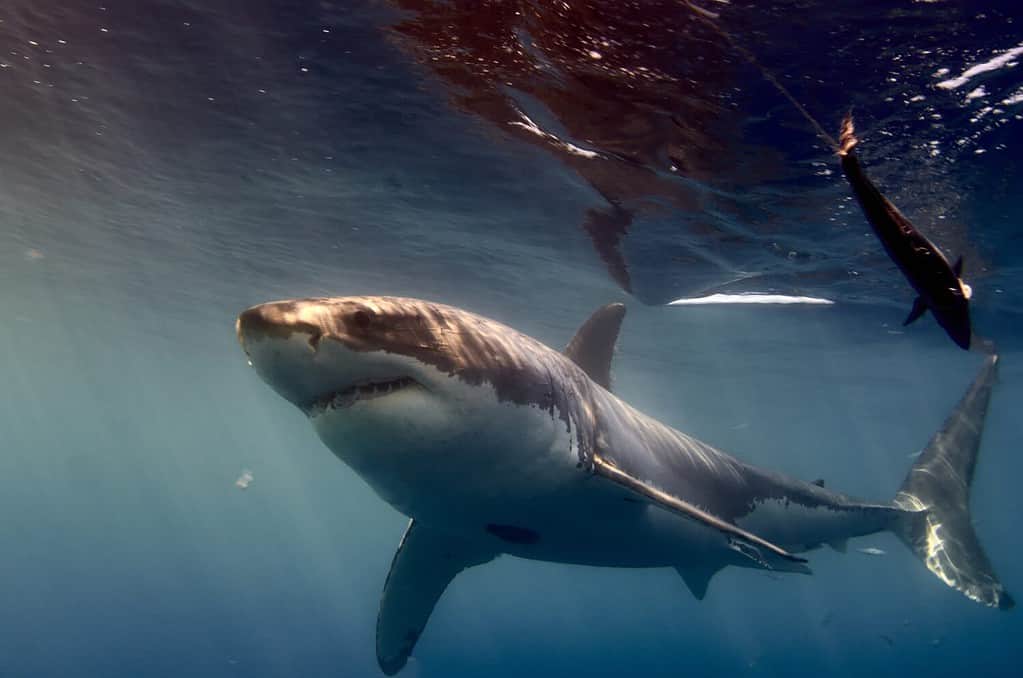
Great white sharks are occasional visitors to Washington State.
©Wirestock Creators/Shutterstock.com
Common Thresher
Another shark you may find off the coast of Washington State is the common thresher, known for its very long tail. Common thresher sharks live and swim along the coast when migrating from Washington/Oregon down to Baja Peninsula, Mexico. These sharks are listed as Vulnerable on the IUCN Red List. They have long, slender, torpedo-shaped bodies and can be as long as 19 feet.
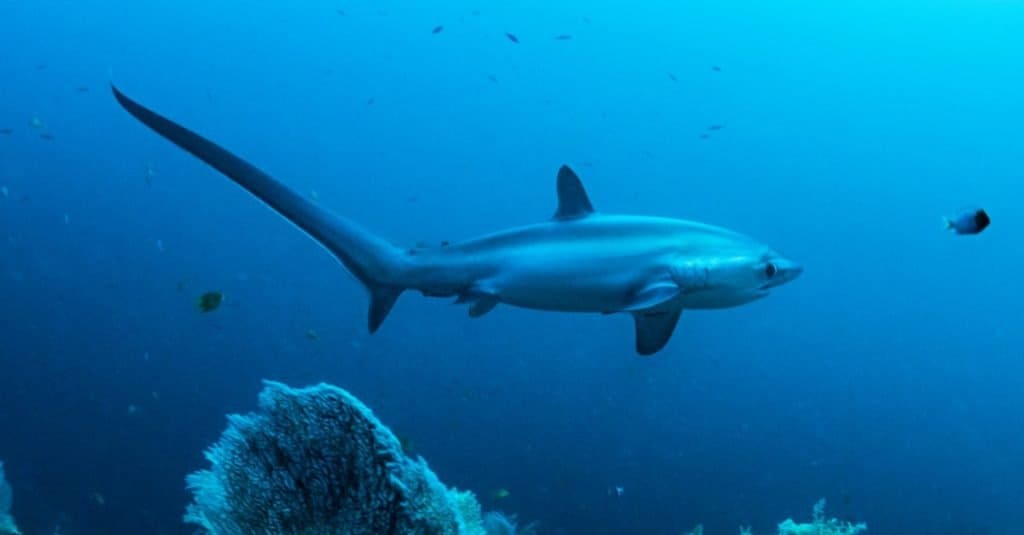
The longest recorded common thresher shark was 19 feet long.
©Shane Gross/Shutterstock.com
Spiny Dogfish
The most common shark species in Washington State is the Pacific spiny dogfish, also known as the mud shark. Although very widespread, it’s listed as Vulnerable on the IUCN Red List. Spiny dogfish are excellent hunters and have a wide diet of fish, squid, shrimp, crab, and jellyfish. They are also bottom-dwellers, often found at depths of around 160 to 400 pounds.
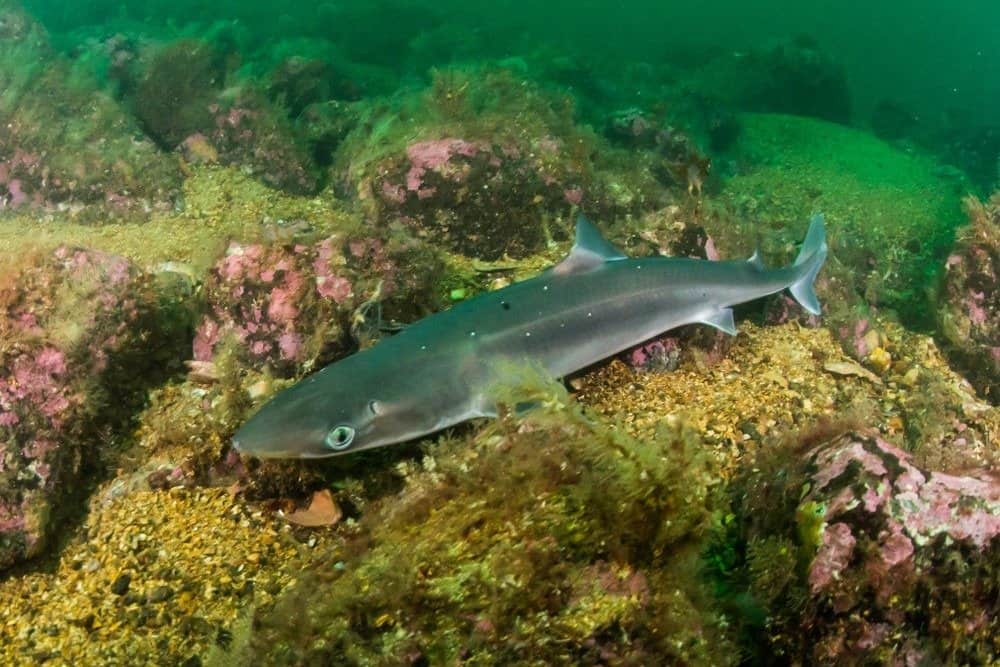
Spiny dogfish are bottom-dwelling sharks.
©Joern_k/Shutterstock.com
Blacktip Shark
You can also find blacktip sharks in Washington State. Blacktip sharks are members of the family Carcharhinidae. They live in coastal tropical and subtropical waters around the world. Sadly, like other shark species on this list, it’s listed as Vulnerable on the IUCN Red List. Blacktip sharks are long, robust sharks, with a maximum length of 9.2 feet.
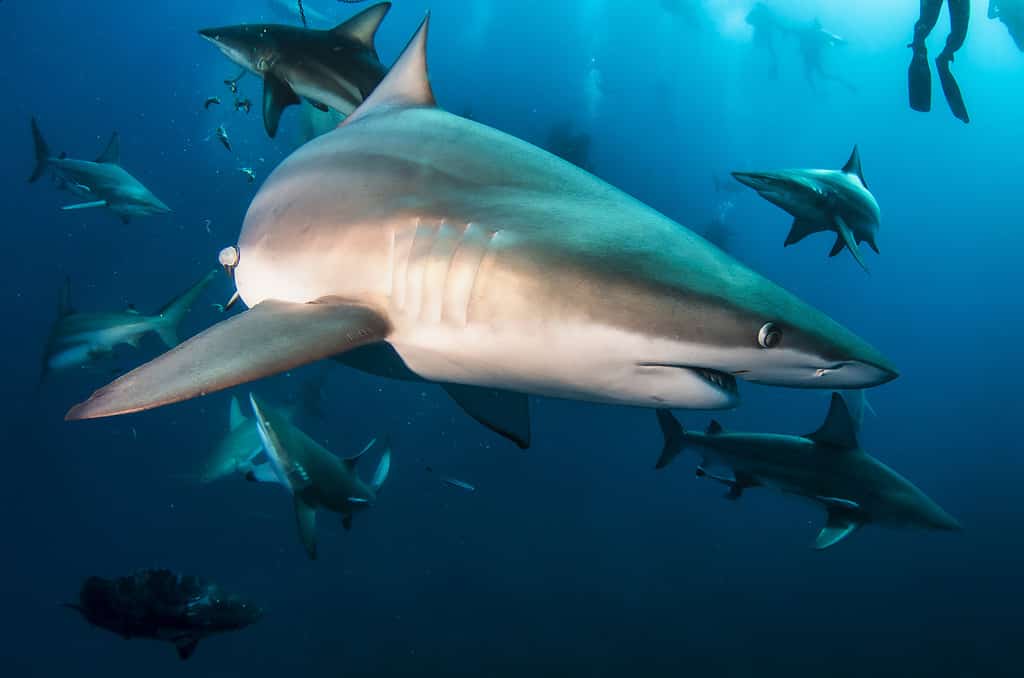
Blacktip sharks are listed as Vulnerable on the IUCN Red List.
©iStock.com/Aleksandr Golubev
Blue Shark
The last shark species on our list is the blue shark. This shark species is a unique, long, and slender fish. Although widespread, it’s listed as Near Threatened on the IUCN Red List. Blue sharks are highly migratory fish that swim far distances, like from New England to South America. They are members of the Carcharhinidae family and on average are about 10 feet long.
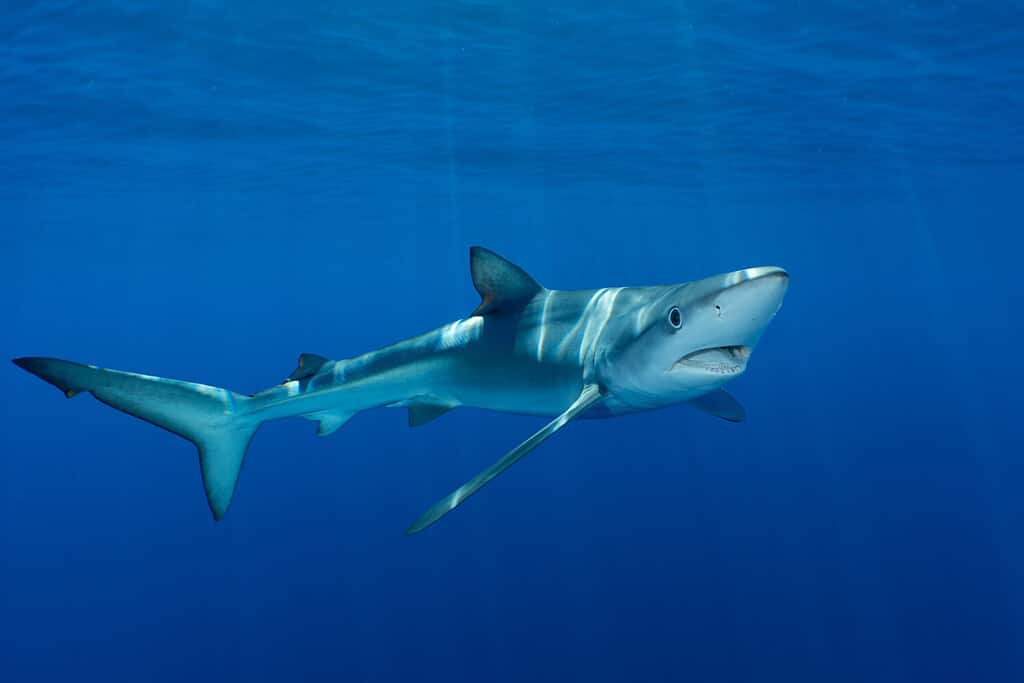
On average, blue sharks are about 10 feet long.
©Samy Kassem/Shutterstock.com
The photo featured at the top of this post is © Greg Amptman/Shutterstock.com
Thank you for reading! Have some feedback for us? Contact the AZ Animals editorial team.




